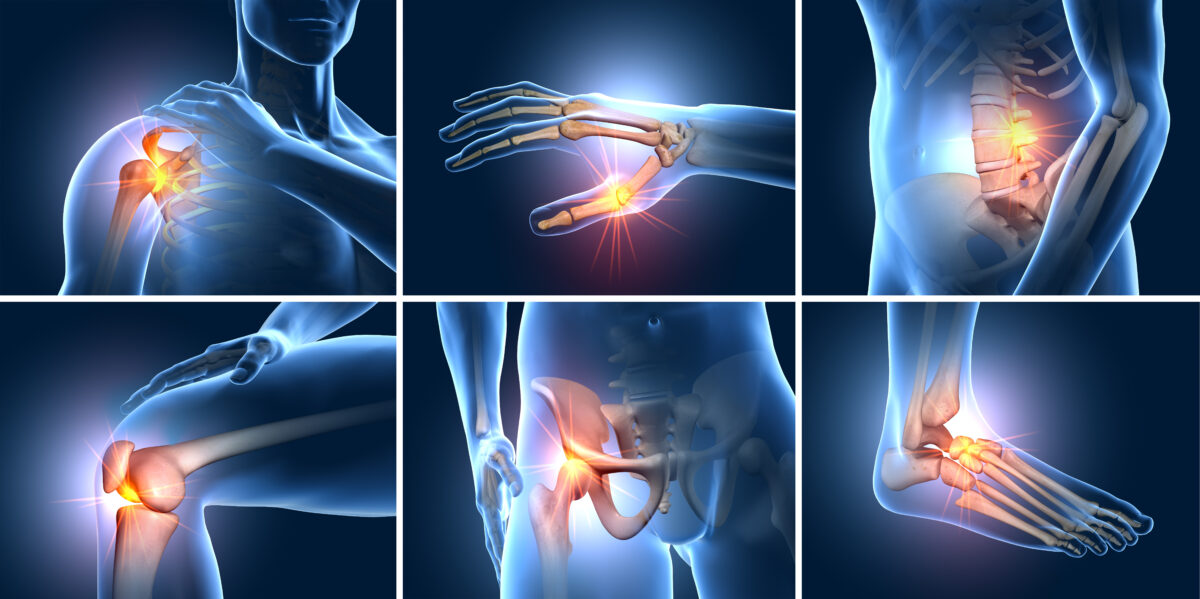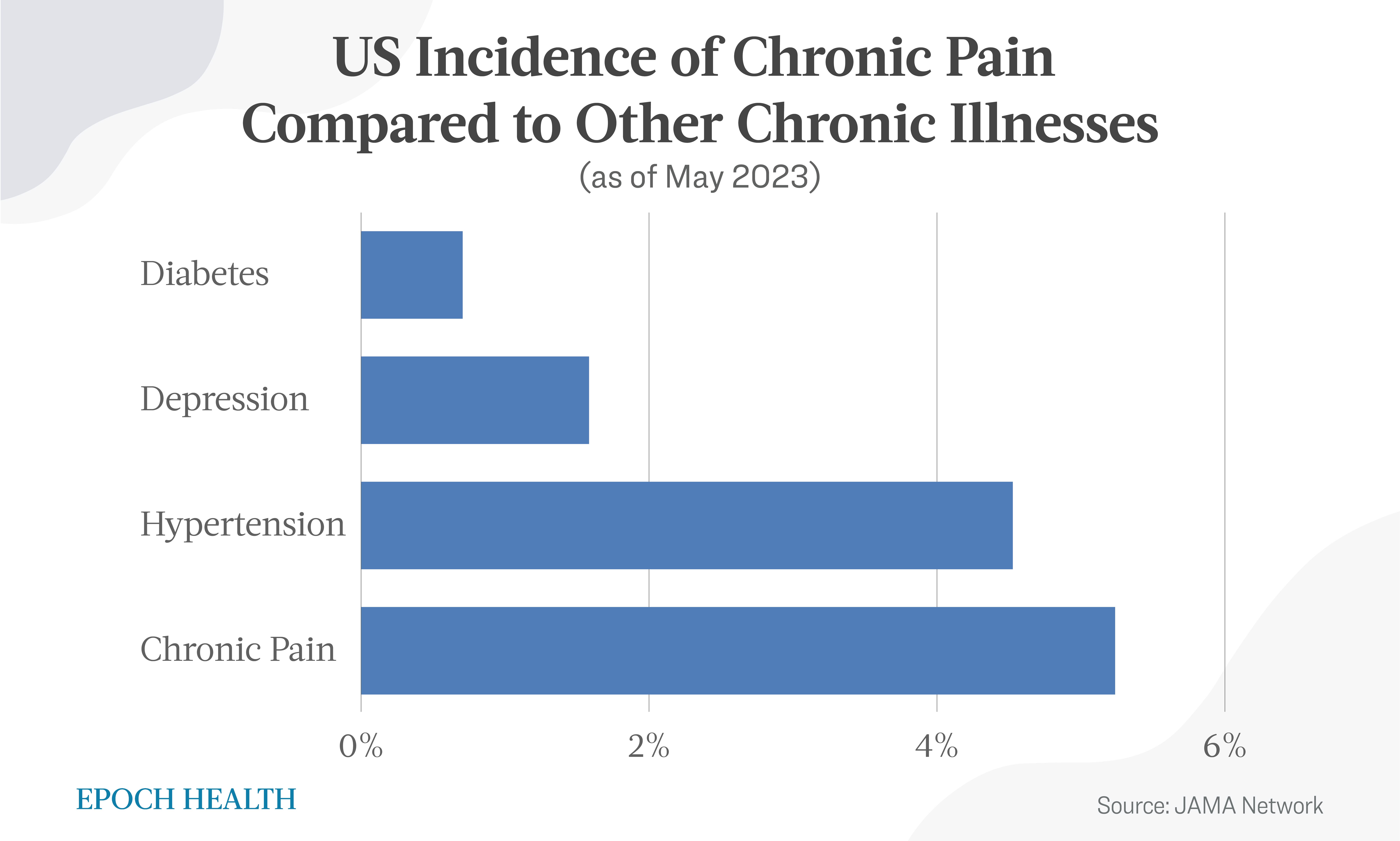


In this series, “Easy Exercises to Combat Chronic Pain,” occupational therapist Kevin Shelley focuses on common issues associated with chronic pain and simple exercises to strengthen weak muscles and enhance joint mobility, with the goal of helping you become pain-free.
Pain is a constant background noise of the human experience, and the volume is unfortunately rising.
A new study published in JAMA Network on May 16 using data from the 2019–2020 National Health Interview Survey of about 10,000 U.S. adults shows a startling trend: The prevalence of chronic pain is growing and shows no signs of slowing down.
Chronic pain currently affects more than 50 million adults (20.5 percent) in the United States, including 17 million (almost 7 percent) with high-impact chronic pain—pain reported to limit life or work activities on most days or every day.
In fact, chronic pain was found to exceed the incidence of other chronic ailments, such as depression, diabetes, and high blood pressure.
The JAMA Network study found that women are affected more than men in every age group, but both demographics are experiencing a consistent rise in reported cases. High-impact chronic pain was also higher among women.
While chronic pain has traditionally been associated with individuals older than 65, recent statistics show that all age groups are experiencing increases, with the younger populations demonstrating increases proportionate to the increase among the older group.
Pain is a constant companion during human existence. All of us experience many different types of pain in the course of our lives, and all of us experience a range of pain from mild to severe, and from short-lived to longer-lasting.
Prescription pain medications are often used to treat pain. From 2015 to 2018, more than 10 percent of U.S. adults reported using prescription pain medications within the past 30 days, both opioid and non-opioid; 5.7 percent of U.S. adults used one or more prescription opioids.
Pain is a leading indicator of internal disease, and the nature and intensity of that pain can help health care practitioners assess many health problems more accurately.
Pain is also one of the most consistent ways to get even the most stubborn people to seek needed medical attention.
Chronic pain, defined as pain lasting three or more months, can have a debilitating effect on a person’s ability to work and perform daily activities. It’s been linked to depression, increased suicide risk, substance abuse, and dementia.
Pain is expensive. In fact, medical and economic costs associated with pain easily exceed half a trillion dollars a year, more than the annual costs for heart disease, cancer, or diabetes.
About 10.4 percent of adults with chronic pain in 2019 reported being pain-free in 2020, showing that chronic pain can be resolved.
Not all chronic pain is directly associated with a specific medical diagnosis. Research increasingly shows a correlation of chronic pain not only with well-defined medical diagnoses but also with postural and lifestyle factors. Many of us are not as active as we should be, allowing joints to stiffen and muscles to grow weak.
A consistent regimen of safe, effective, and easy-to-perform exercises can help increase joint flexibility and muscle strength, reducing and preventing chronic pain.
Next: Eight out of 10 people will experience back pain during the course of their lifetime, and more than half will experience symptoms severe enough to seek medical intervention. Specific exercises to strengthen and balance your spine can be a game-changer.
Views expressed in this article are the opinions of the author and do not necessarily reflect the views of The Epoch Times. Epoch Health welcomes professional discussion and friendly debate. To submit an opinion piece, please follow these guidelines and submit through our form here.

